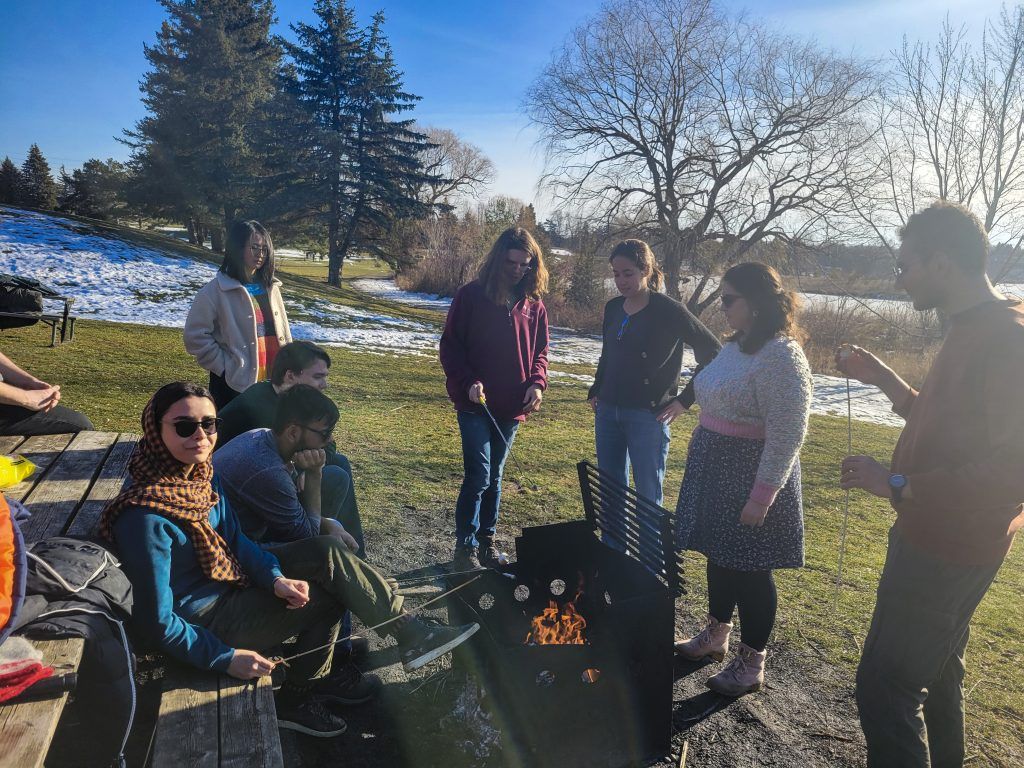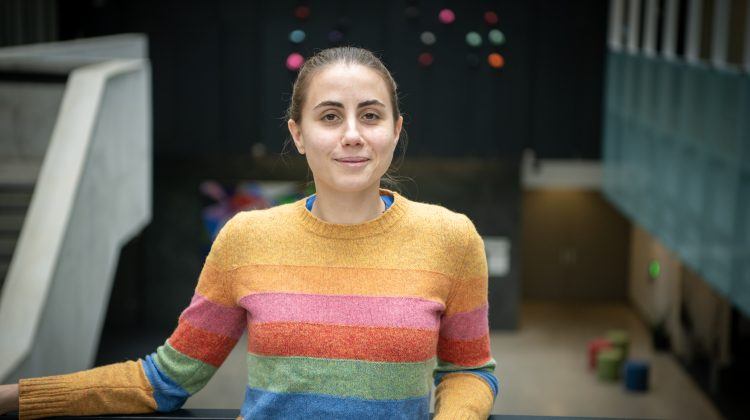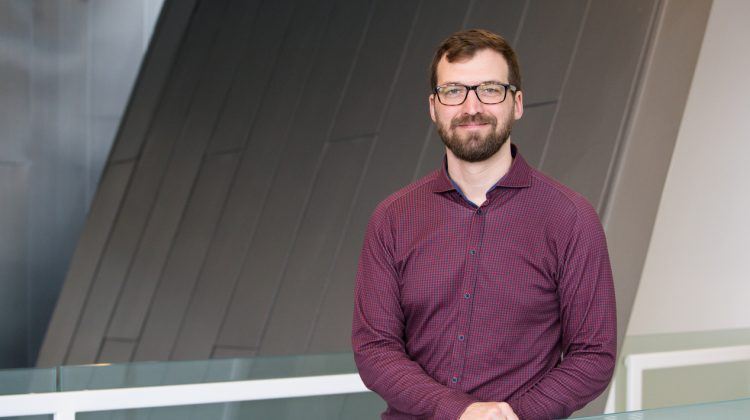Solve an open problem in physics. The catch? You have one week …
Perimeter master’s students tackle unsolved physics problems … and the Canadian winter.
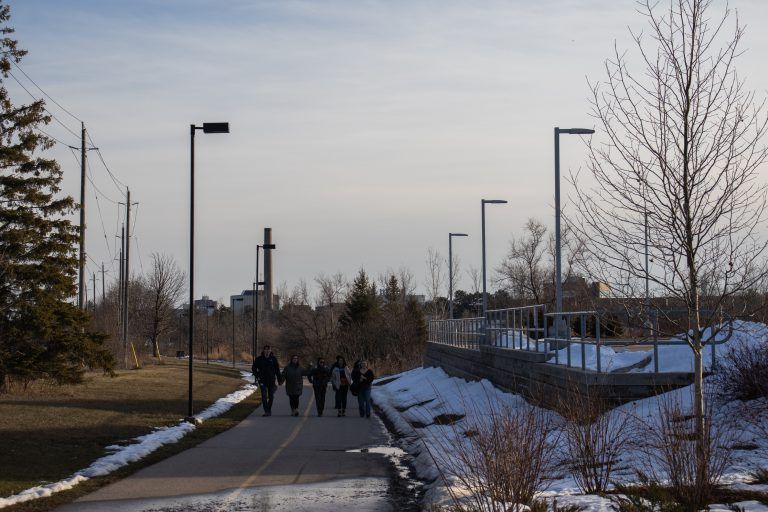
What if you and some friends had one week to try to do something no one has ever done before? Where would you start? What tools would you need? And how could you help each other succeed?
That’s what Perimeter Institute’s annual Winter School is all about.
Each year in February, the current cohort of Perimeter Scholars International (PSI) Master’s students take a pause from their usual courses and problem sets. For a week, they are thrust into the world of hands-on research. Working in small groups, mentored by some of the top minds in physics, they tackle an open research question that no one has answered before.
These aren’t necessarily paradigm-shifting questions – the students only have a week, after all – but they are real unsolved problems at the edge of known physics. And sometimes, real progress is made: several previous students have published their Winter School results in peer-reviewed publications. Even if that doesn’t happen, the idea is to have participants make the leap from being students to being scientists.
“We’re not only learning the basics, but actually computing new results, and doing things by ourselves that have never been done before. This has been an amazing experience,” says Raquel Izquierdo Garcia, one of this year’s cohort of PSI students.
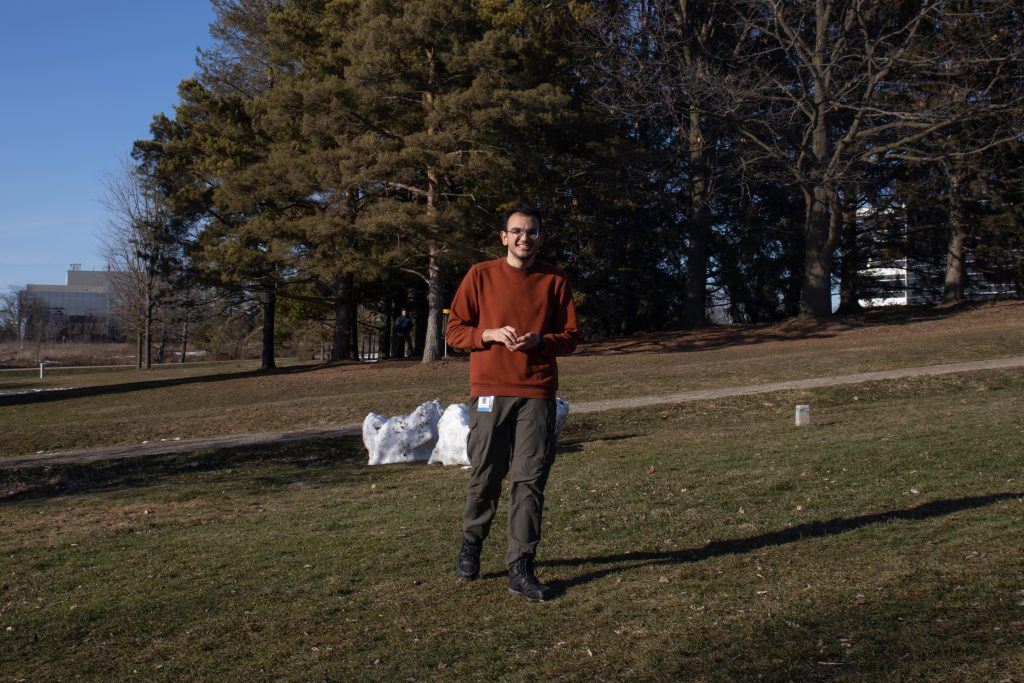
Mentored by Perimeter Research Faculty member Freddy Cachazo and postdoctoral researcher Yong Zhang, Izquierdo Garcia’s team focused on finding new methods for working with scattering amplitudes, a mathematical tool used to measure the probability that certain particles will be created inside particle colliders.
Understanding these probabilities helps provide a better understanding of the subatomic particles that ultimately make up the world of matter that we experience.
“Computing the integrals for scattering amplitudes is very difficult. People working with amplitudes try to find formulas that are very concise, that can carry a lot of information in a very simple expression,” says Izquierdo Garcia.
In trying to map out the behaviour of subatomic particles like quarks inside of protons and neutrons, finding formulas that can be generalized is a very useful, but challenging, process.
Alongside the long hours tackling computations at blackboards and computers, Winter School also gets students outside for activities like tubing, skating, and bonfires. Izquierdo Garcia says that the chatter around the bonfire was all about physics. Skating, on the other hand, required her full attention.
“This was the first time I’ve skated,” says Izquierdo Garcia, who grew up in Spain. “It was a very nice experience. The students who were used to skating because they’ve been doing it since they were kids were helping the ones who were skating for the first time.”
Taking time away from the intense academic experience to glide across some ice or cook up some s’mores is core to the Winter School experience. “It’s a change of pace, and binds the group together,” says PSI student Anna Knorr. The students get a chance to build future scientific networks between their peers and mentors. Plus, being outdoors allows breathing room so that when it is time to dive back into their research problems, they can do so refreshed and buoyed by new perspectives.
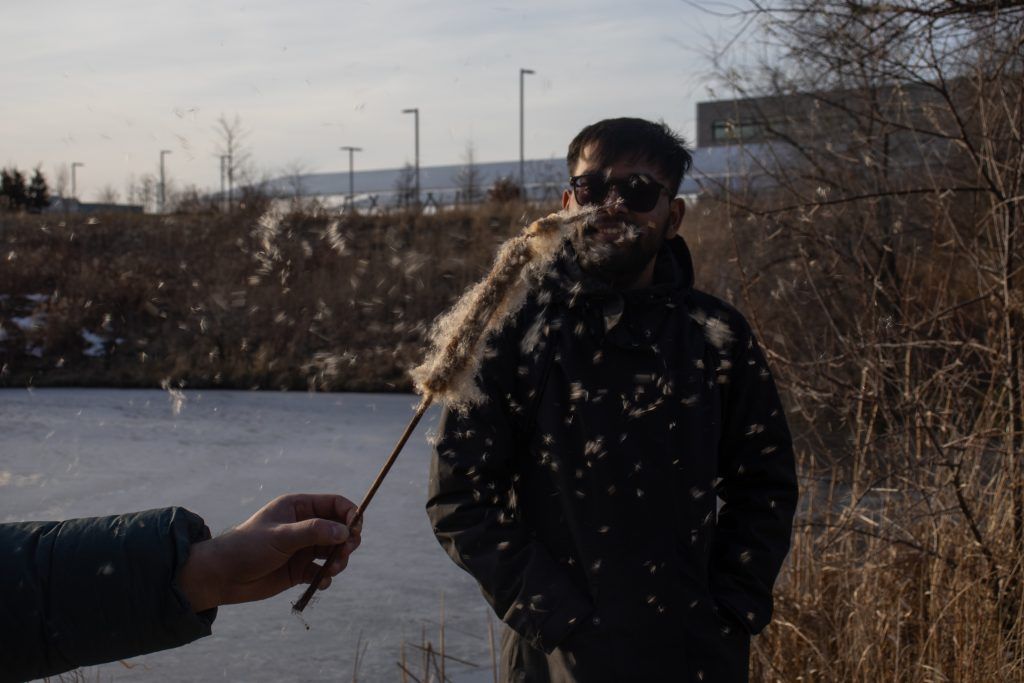
While Izquierdo Garcia’s team was busy examining physics on the smallest scales, Knorr and her group spent the week studying the structure of the universe on the largest scales.
“We’ve been using images from the James Webb Space Telescope (JWST),” says Knorr. “That’s something thing that I’ve never done before: actually work with astrophysical data.”
JWST uses infrared wavelengths to see further back into the past than previous space telescopes. It recently imaged six galaxies as they existed shortly after the Big Bang, making them among the youngest galaxies ever imaged. The first analysis of these galaxies was published in Nature on February 22, and has tons of scientists scratching their heads, because the galaxies seem to be bigger than expected, considering their age. Knorr and her peers, including Cole Coughlin, investigated whether this discrepancy might be explained using a modified theory of dark matter.
“We have models that describe how the universe behaves on the larger scales very well…but on the smaller scales, from the size of galaxies and below, our dark matter models seem to fail. They don’t really describe the processes that we’d hoped for,” says Coughlin.
One possible modification to the standard model of cosmology (known as Lambda Cold Dark Matter), is a model known as ‘fuzzy’ dark matter, which consists of incredibly light dark particles that could form halos around galaxies.
“We’re looking at whether this ultra-light dark matter model – fuzzy dark matter – could be the cause,” says Coughlin.
Helping Coughlin and Knorr along were Perimeter Outreach Faculty member Katie Mack and postdoctoral fellow Luna Zagorac.
“JWST is doing its best to break our cosmological models,” says Zagorac. “It’s seeing very bright galaxies way earlier than we expected.”

How do you go about getting started on such a big problem? The team brainstormed a couple ways to attack it – either starting with recent theoretical work about how dark matter halos form, or starting with the new data from JSWT. When offered the choice, Knorr and Coughlin decided to split the difference, one starting with halo formation and one with the data. They then worked towards each other, with the hopes that they could meet in the middle and see how the pieces fit together.
The collaboration and assistance the students provided one another along the way is essential when grappling with an open-ended research question. Zagorac was impressed by their ability to spontaneously find and discuss relevant research papers as they worked on the project.
“I was really impressed with both Anna and Cole’s dedication, and just how incredibly excited they are. When I talk to students like Anna and Cole who are hearing some of these things for the first time, asking really intelligent questions, and who have really great ideas, it renews my love for dark matter research,” says Zagorac.
In all, this year’s PSI cohort worked on eight different research projects at Winter School, spanning a broad spectrum of intriguing questions in areas from quantum causality to condensed matter.
PSI students like Izquierdo Garcia, Knorr, and Coughlin all describe Winter School as an intense week full of hard work, punctuated with periods of levity and fun. And the best part, they all agree, is the ability to do real research on fundamental science.
“It’s a wild, wild thing to study the large-scale structure of the universe,” Coughlin explains. “Physics moves fast. I know, it can feel slow at times, but we are just beginning to touch things that are really, very incredible. There’s still so much to be known and so much to be discovered. And it’s a wild thing to be a part of it.”
